1. Overview
Giovanni Battista Piranesidʒoˈvanni batˈtista piraˈneːziItalian, often known simply as Piranesi, was an influential 18th-century Italian classical archaeologist, architect, and artist. Born in Venice and active primarily in Rome, he is renowned for his prolific output of etchings, particularly his expansive series depicting the ancient and contemporary city of Rome (known as the Vedute di Roma) and his haunting, imaginative architectural fantasies titled Carceri d'invenzione (Imaginary Prisons). Piranesi's detailed and dramatic prints profoundly shaped the European perception of Roman antiquity, influencing the burgeoning Neoclassicism movement and catering to the intellectual and artistic demands of the Grand Tour. His work transcended mere topographical representation, combining meticulous archaeological observation with a powerful, often romanticized, artistic vision that captured the grandeur and decay of ancient ruins, thereby contributing significantly to the cultural understanding and preservation of historical heritage. He was the father of Francesco Piranesi, Laura Piranesi, and Pietro Piranesi.
2. Biography
Giovanni Battista Piranesi's life, from his Venetian origins to his prominent career in Rome, was marked by a deep engagement with architecture, antiquity, and printmaking, culminating in a significant legacy that continues to influence art and design.
2.1. Early Life and Education
Piranesi was born on October 4, 1720, in the parish of San Moisè, Venice, where he was baptized. His father was a stonemason, providing a practical foundation in construction materials. His older brother, Andrea Piranesi, introduced him to Latin literature and the study of ancient Greco-Roman civilization, sparking an early interest in the classical world. Piranesi later pursued an apprenticeship under his maternal uncle, Matteo Lucchesi, a leading architect associated with the Magistrato alle AcqueMagistracy of WatersItalian, a state organization responsible for the engineering and restoration of historical buildings in Venice. This apprenticeship provided him with foundational knowledge in architecture and drafting.
2.2. Move to Rome and Apprenticeship
In 1740, Piranesi relocated to Rome, a city that would become the primary subject and inspiration for his most famous works. He began his career there as a draughtsman for Marco Foscarini, who was then the Venetian ambassador to the new Pope Benedict XIV and would later become the Doge of Venice. During his time residing in the Palazzo Venezia, Piranesi commenced his crucial apprenticeship in etching and engraving under Giuseppe Vasi, a renowned printmaker specializing in views of Rome. Vasi quickly recognized Piranesi's exceptional talent, reportedly remarking, "You are too much of a painter, my friend, to be an engraver," indicating Piranesi's artistic ambition extended beyond mere technical reproduction. Following his studies with Vasi, Piranesi collaborated with students from the French Academy in Rome to produce a series of veduteviewsItalian of the city. His first significant work, Prima parte di Architettura e ProspettiveFirst Part of Architecture and PerspectivesItalian, was published in 1743, followed by Varie Vedute di Roma Antica e ModernaVarious Views of Ancient and Modern RomeItalian in 1745.
2.3. Marriage and Family
In 1752, Giovanni Battista Piranesi married Angela Pasquini. Together, they had several children, including their son, Francesco Piranesi, who was born in 1758 or 1759 and would later become a significant collaborator and successor in his father's workshop. Piranesi was also the father of Laura Piranesi and Pietro Piranesi.
2.4. Later Life and Death
From 1743 to 1747, Piranesi spent a considerable amount of time in Venice, where, according to some accounts, he frequently visited Giovanni Battista Tiepolo, a prominent Venetian artist whose work expanded the conventional boundaries of reproductive and topographical engravings. Piranesi then returned to Rome and established his own workshop in Via del Corso. Between 1748 and 1774, he produced an extensive and influential series of veduteviewsItalian of Rome, which solidified his international reputation. During this period, Piranesi also dedicated himself to meticulously measuring numerous ancient buildings, a scholarly pursuit that culminated in the publication of Le Antichità Romane de' tempo della prima Repubblica e dei primi imperatoriRoman Antiquities of the Time of the First Republic and the First EmperorsItalian in 1756.
In 1761, he was elected as a member of the Accademia di San Luca, a prestigious Roman artistic institution, and subsequently opened his own printing house. The collection of engravings titled Campo Marzio dell'antica RomaCampus Martius of Ancient RomeItalian was printed in 1762. The following year, Pope Clement XIII commissioned him to restore the choir of San Giovanni in Laterano, though this project ultimately did not materialize. In 1764, Cardinal Rezzonico, a nephew of the Pope, appointed Piranesi to undertake his only significant architectural work: the restoration of the church of Santa Maria del Priorato within the Villa of the Knights of Malta on Rome's Aventine Hill. In this project, Piranesi ingeniously combined Classical architectural elements, trophies, and escutcheons with his unique imaginative flair in the design of the church's facade and the surrounding walls of the Piazza dei Cavalieri di Malta.
In recognition of his achievements, Piranesi was made a knight of the Golden Spur in 1767, allowing him to sign his works as "Cav[aliere] Piranesi." By 1769, his publication of a series of innovative and sometimes unconventional designs for chimneypieces, alongside an original range of furniture pieces, established his reputation as a versatile and resourceful designer. In 1776, he created one of his most celebrated works as a 'restorer' of ancient sculpture, the Piranesi Vase. From 1777 to 1778, he published Avanzi degli Edifici di PestoRemains of the Edifices of PaestumItalian, documenting the ancient Greek ruins at Paestum. Giovanni Battista Piranesi died in Rome in 1778 after a prolonged illness. He was buried in the church he had helped restore, Santa Maria del Priorato, with his tomb designed by Giuseppi Angelini.
3. Artistic Activities and Works
Piranesi's artistic output was vast and diverse, encompassing his renowned print series, architectural designs, and decorative arts, all reflecting his profound engagement with classical antiquity and his innovative approach to visual representation.
3.1. The Views (Vedute di Roma)
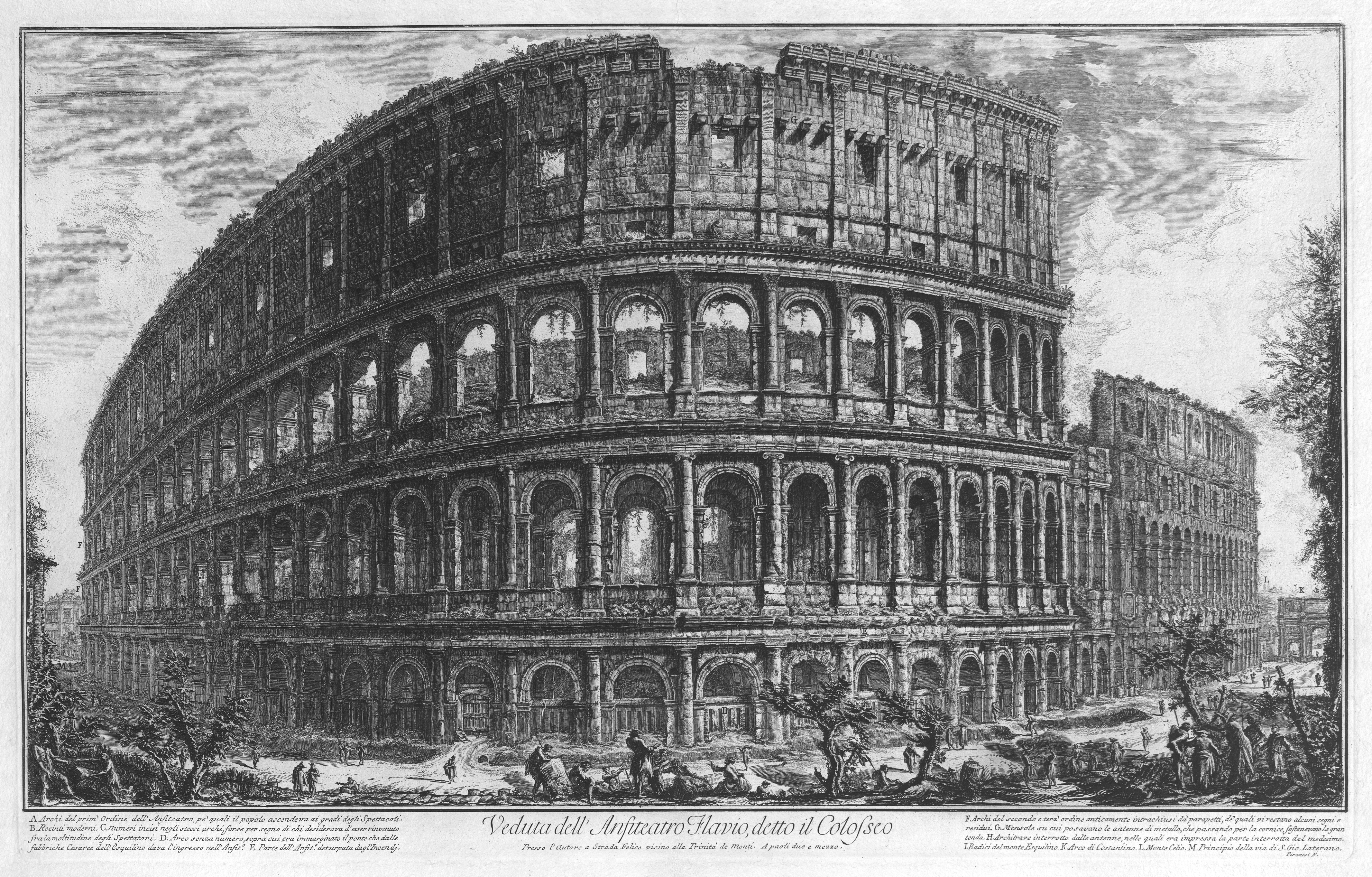
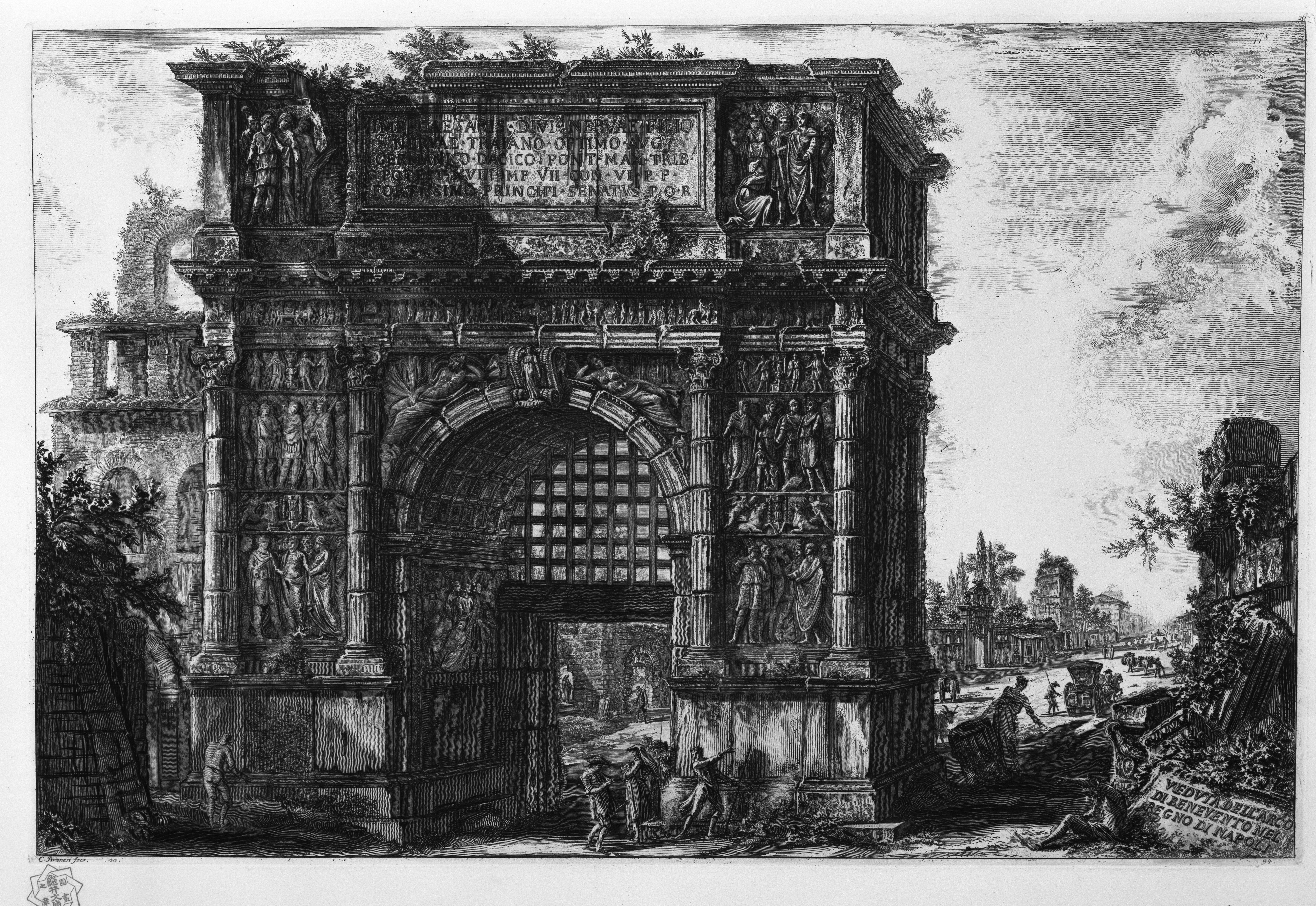
Piranesi's influential series of etchings, the Vedute di Roma (Views of Rome), played a pivotal role in shaping the perception of the Eternal City during the 18th century. This era saw Venice emerge as a center of intellectual and international exchange, particularly through the phenomenon of the Grand Tour. The ideas of the Enlightenment stimulated artists and theorists across Europe, leading to the emergence of new artistic expressions such such as the veduta (topographical view), capriccio (architectural fantasy), and veduta ideata (imaginary composition). Rome, as the developing hub of the Grand Tour, attracted artists, architects, dealers, and antiquarians from across Europe, many of whom came through official institutions like the French Academy or to witness new discoveries at Herculaneum and Pompeii. Piranesi, with his own print workshop and a museum of antiquities nearby, cultivated relationships with wealthy Grand Tourists, especially the English, often meeting them in popular gathering places like the Antico Caffè Greco and the Caffe degli Inglesi.
The ancient remains of Rome profoundly inspired Piranesi. Drawing from his experiences in Venice and his study of the works of Marco Ricci and Giovanni Paolo Panini, he not only appreciated the engineering marvels of ancient buildings but also grasped the poetic essence of their ruins. His technique involved a faithful imitation of actual ruins, combined with an inventive ability to reconstruct missing parts based on his understanding of the original architects' designs. Piranesi's masterful engraving skills allowed him to introduce elements like groups of vases, altars, and tombs that were not present in reality, manipulate scale to create dramatic effects, and employ a broad and scientific distribution of light and shade to complete the picture, resulting in striking and evocative views.
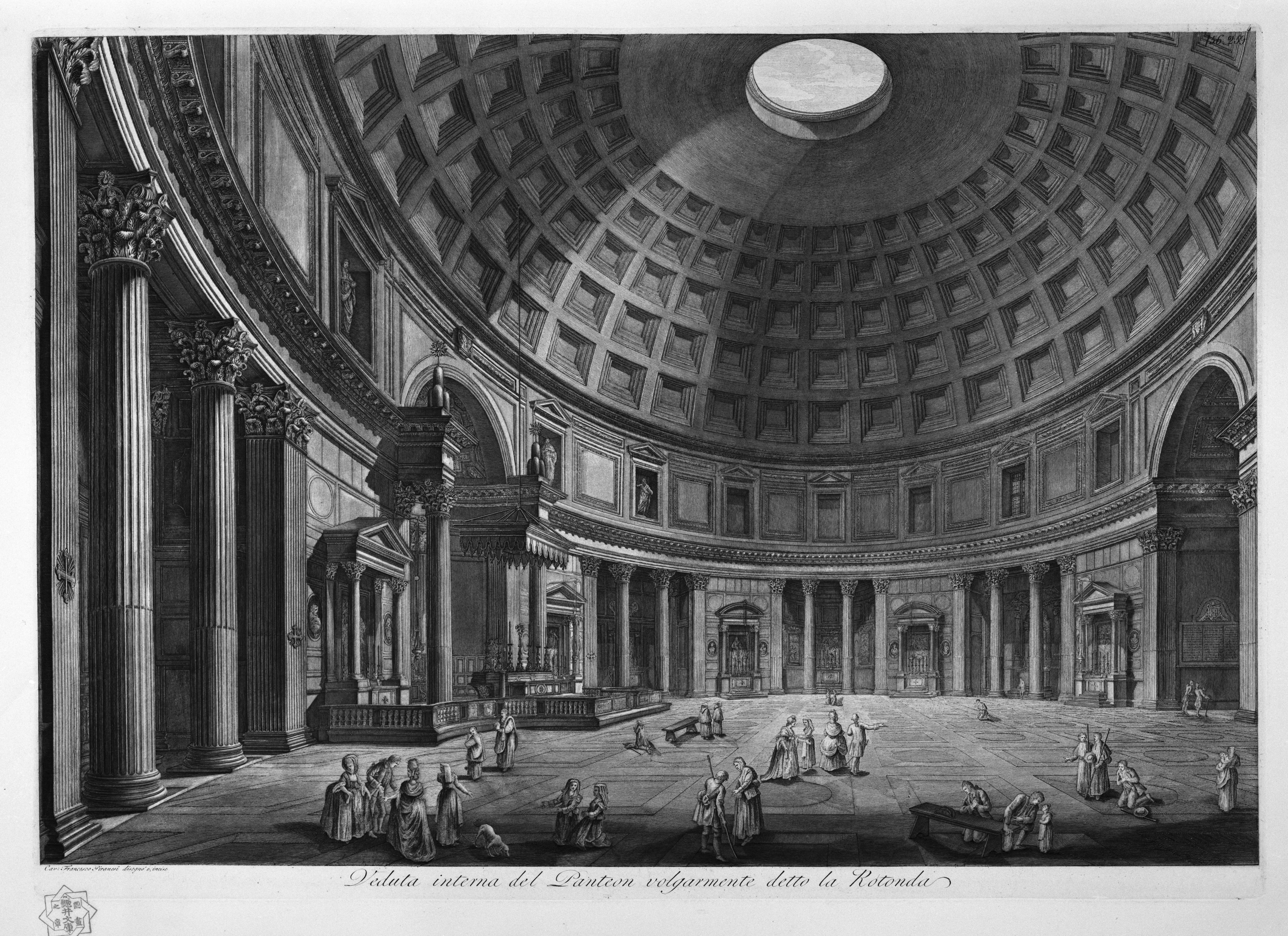
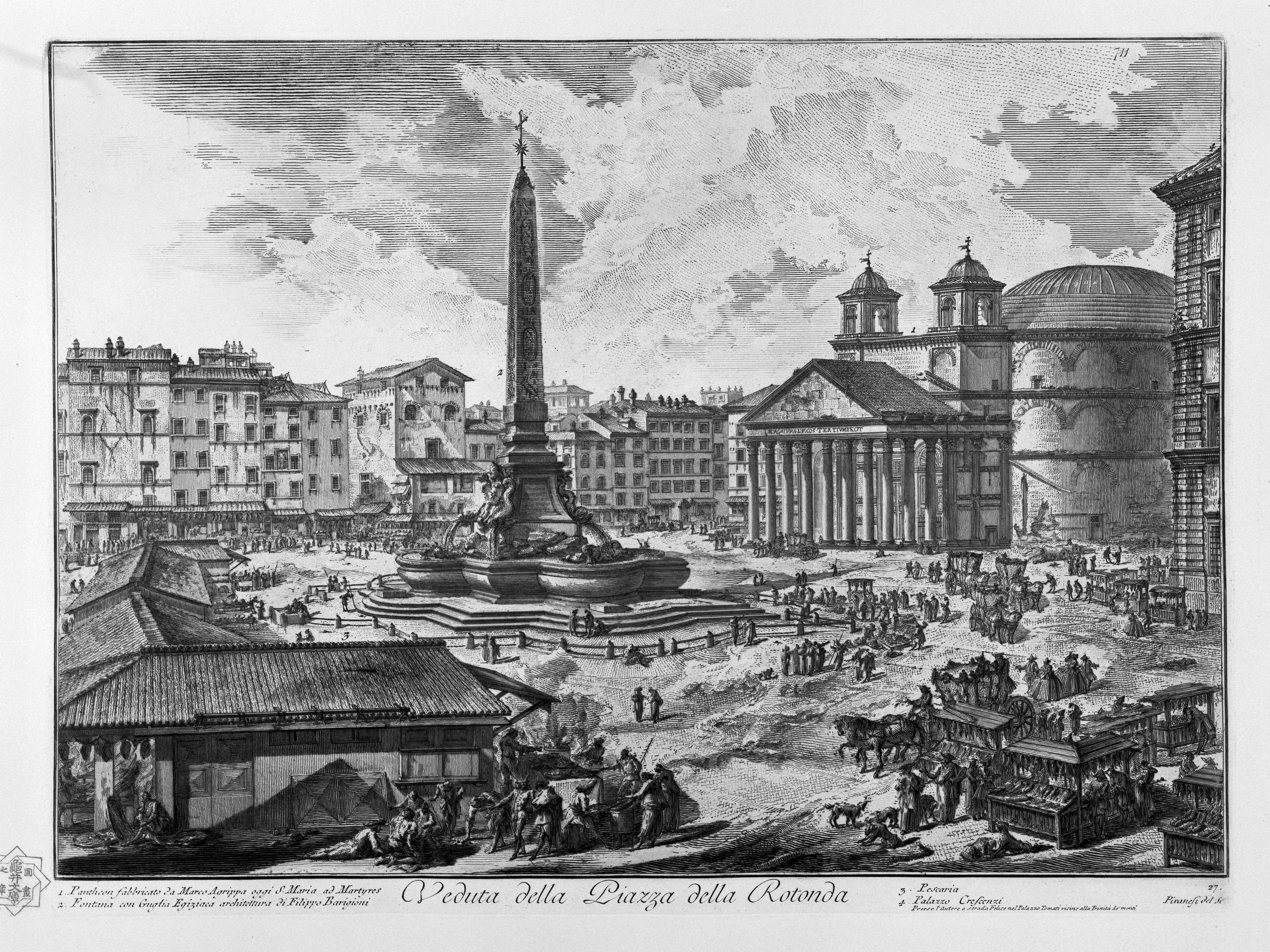
A notable aspect of some of his Views is the depiction of human figures characterized by poverty, lameness, or apparent drunkenness, which appear to mirror the decay of the ruins themselves. This aligns with a familiar theme in Renaissance literature, where the ruins of Rome serve as a metaphor for the imperfection and transience of human existence.
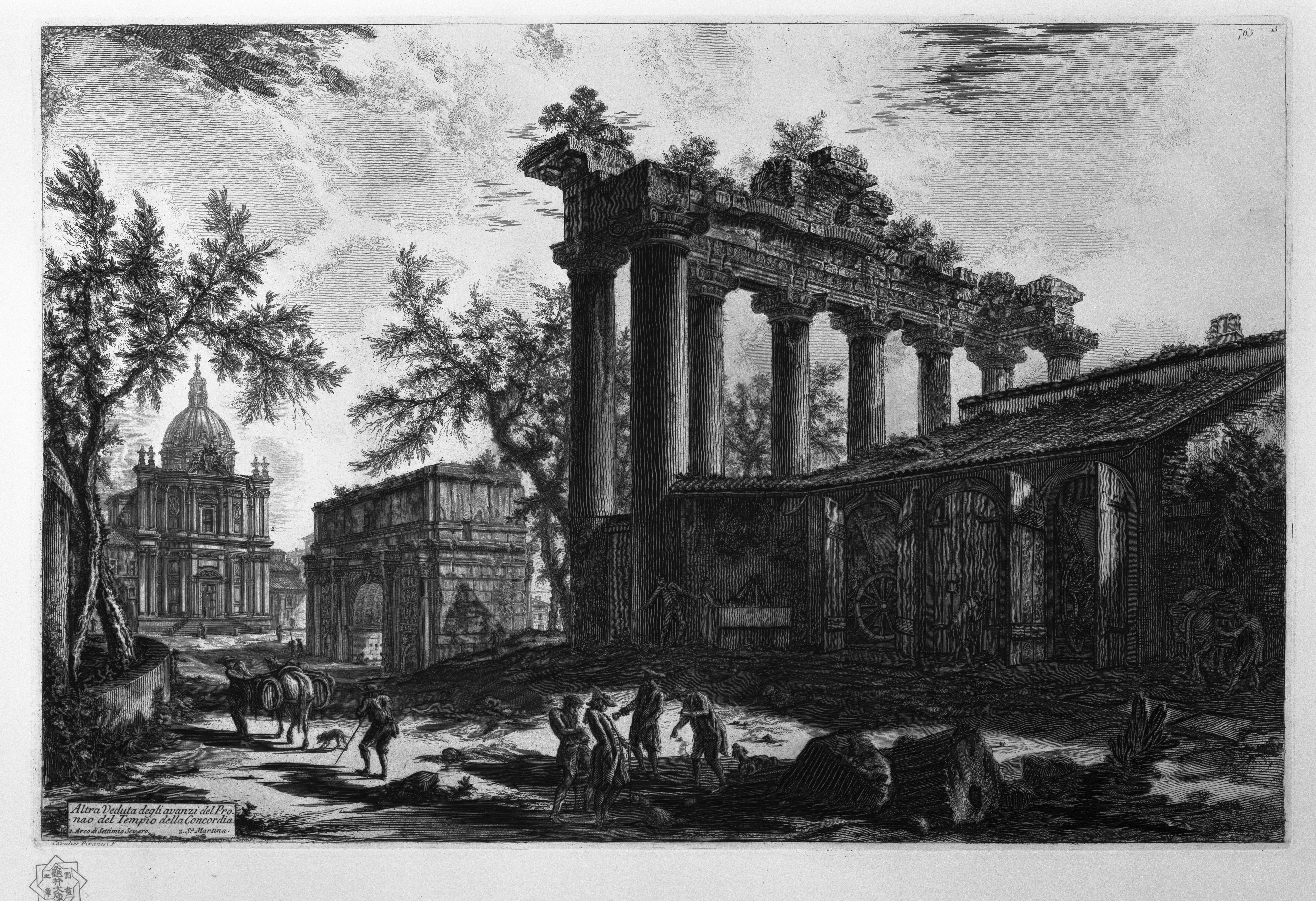
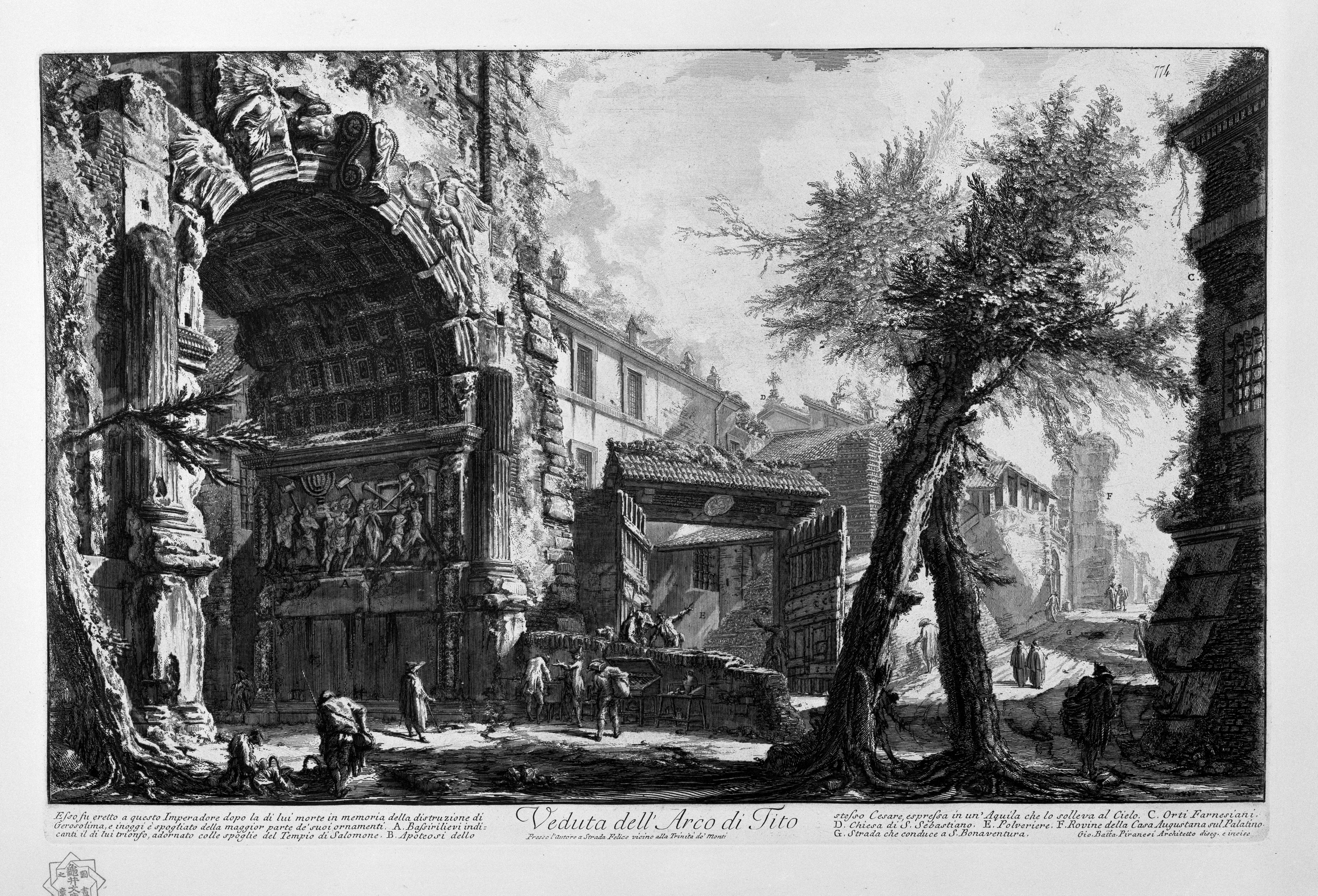
Following Piranesi's death, some of his later works were completed by his children and several pupils. His son and collaborator, Francesco Piranesi, diligently collected and preserved his father's plates, where the freer lines of the etching-needle often complemented the more rigid work of the burin. A comprehensive collection of 29 folio volumes, containing approximately 2000 prints, was published in Paris between 1835 and 1837. Piranesi's reproductions of both real and imaginatively recreated Roman ruins, which sometimes incorporated elements from artists like Claude Lorrain and Salvatore Rosa, had a profound influence on the development of Neoclassicism. He also made copies of etchings by Israel Silvestre, whose works he admired.
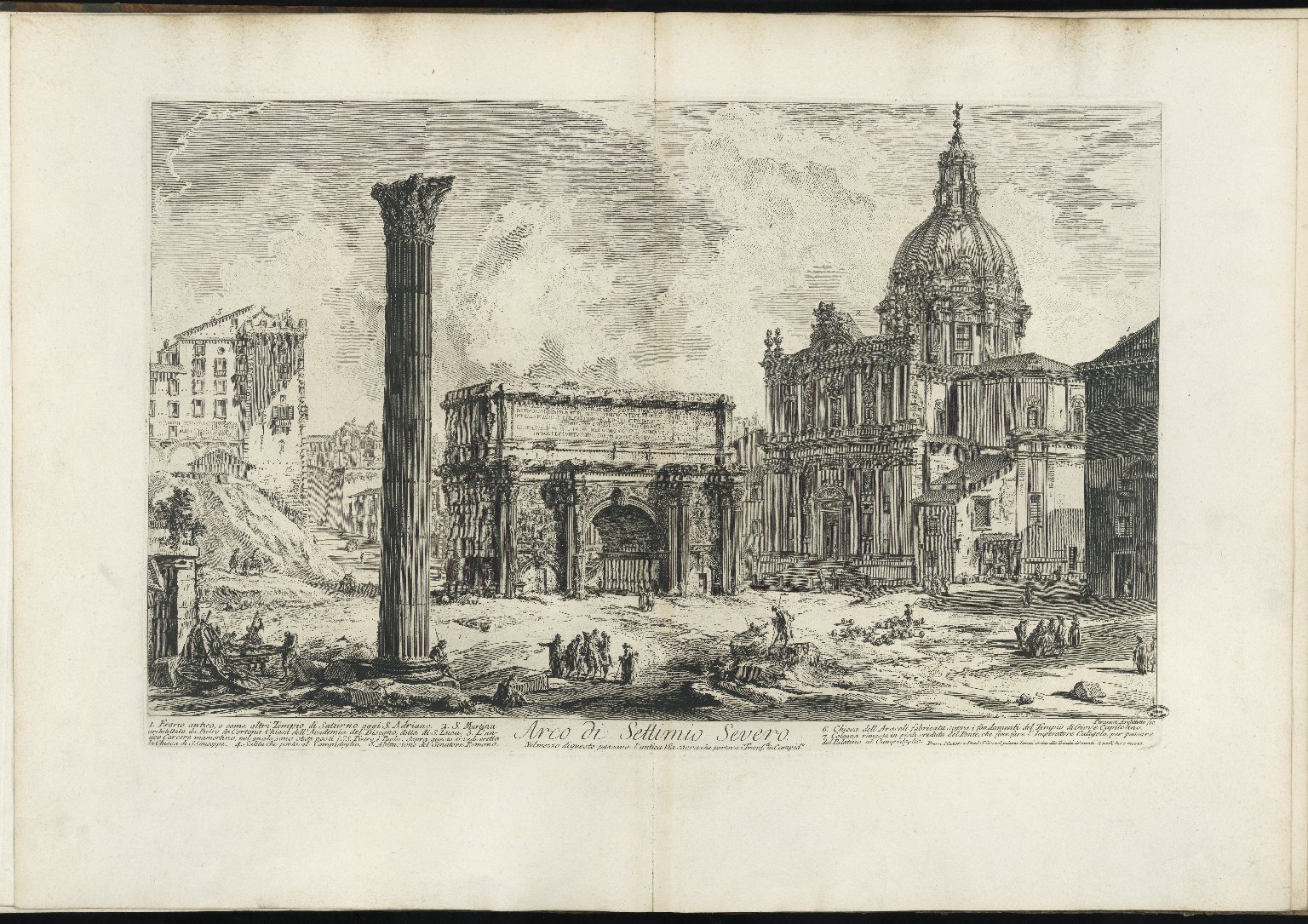
3.2. The Prisons (Carceri d'invenzione)
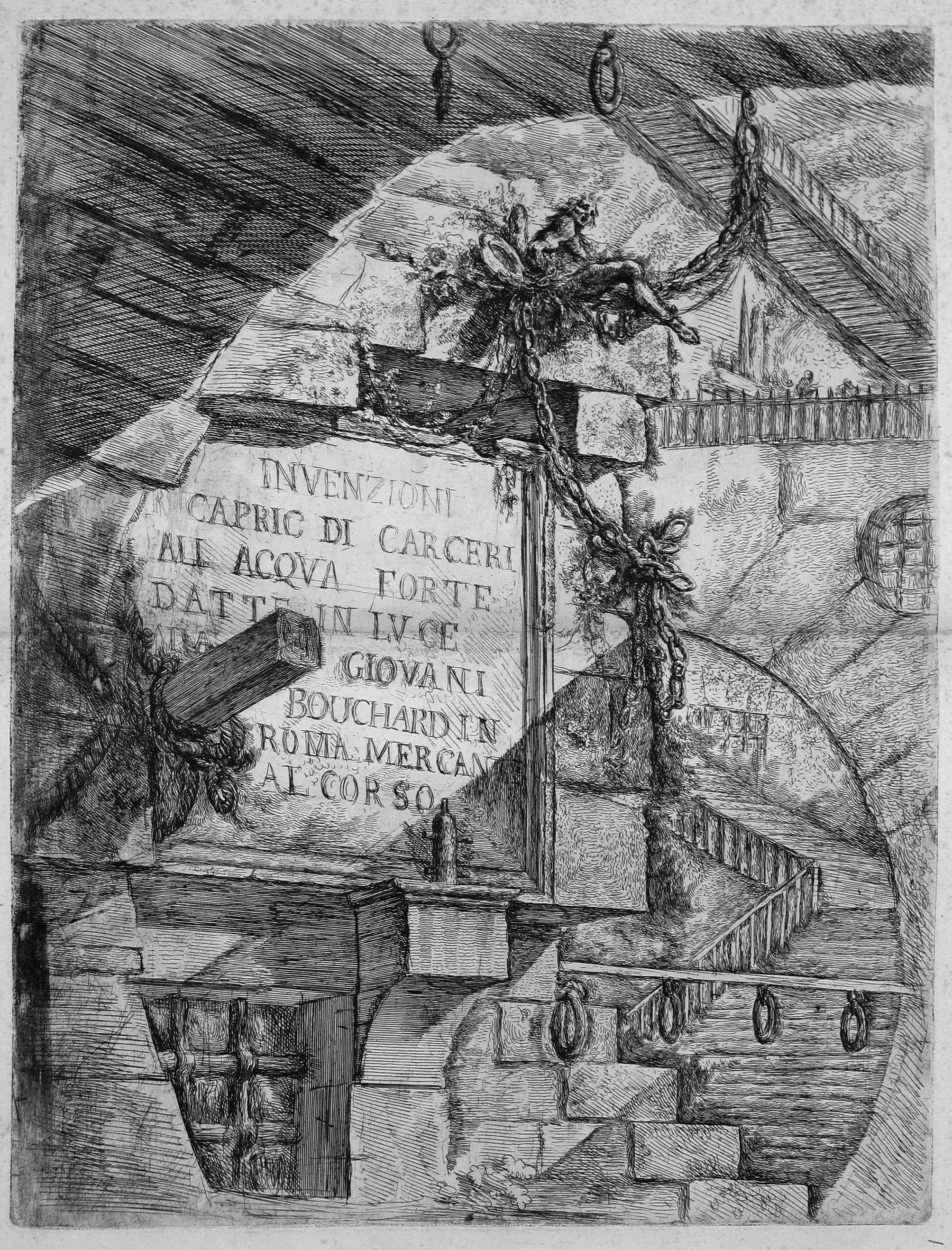
The Prisons, also known as Carceri d'invenzioneImaginary PrisonsItalian, is a celebrated series of 16 prints that depict enormous, subterranean vaults filled with intricate stairs, towering arches, and formidable machinery. Piranesi began this series around 1745. The first state of these prints, published in 1750, comprised 14 etchings. These initial works were untitled and unnumbered, characterized by a more sketch-like appearance, and typically measured 16 in by 21 in.
For the second publication of the series in 1761, Piranesi extensively reworked all the existing etchings, adding new details, intensifying the chiaroscuro, and numbering them from I to XVI. Plates II and V were entirely new additions to the series. The prints numbered I to IX were executed in a portrait format (vertical orientation), while those from X to XVI adopted a landscape format (horizontal orientation). In this second edition, some of the illustrations appear to have been deliberately edited to incorporate impossible geometries, contributing to their surreal and disorienting psychological impact.
3.3. Architectural and Design Work
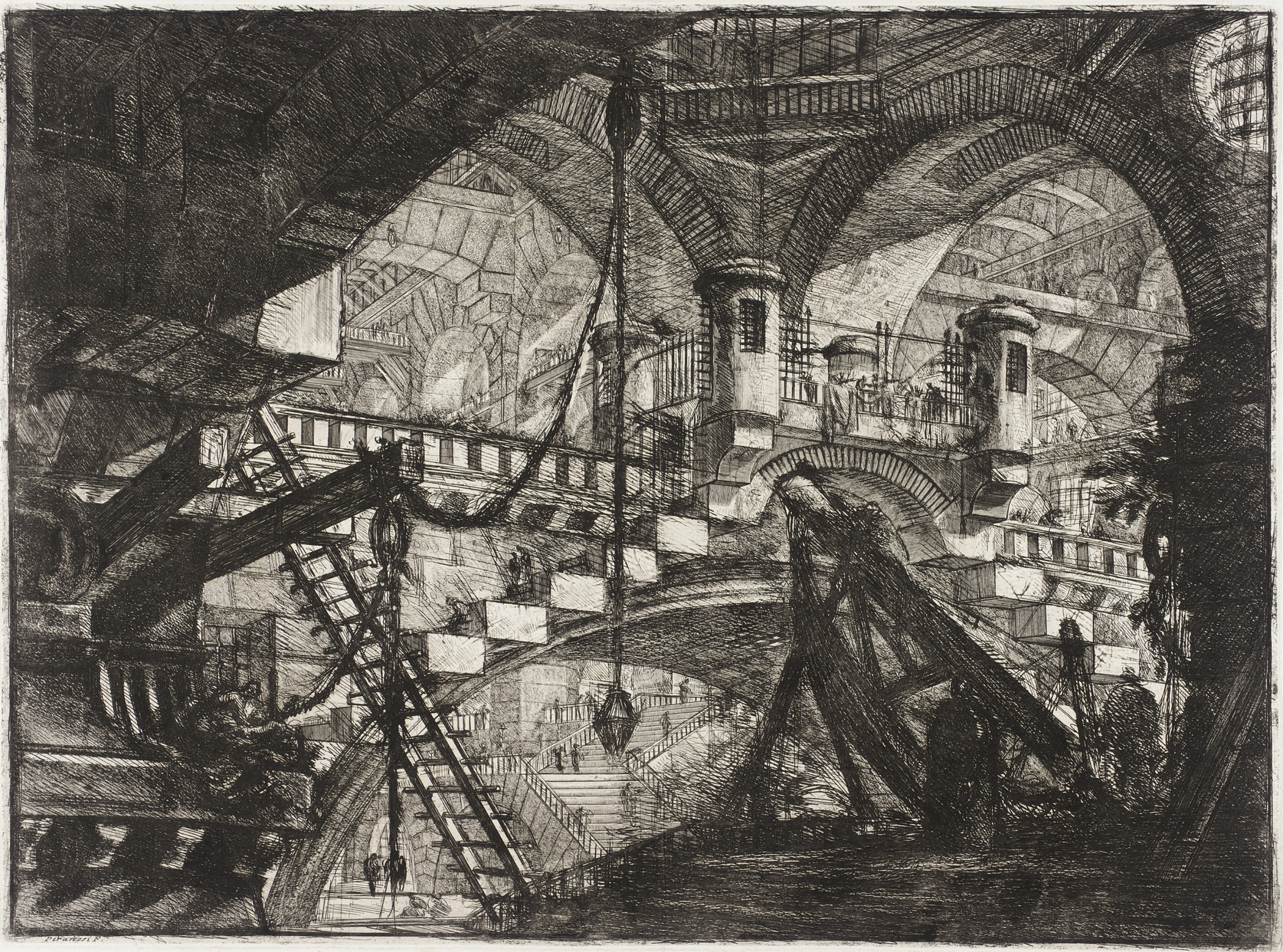
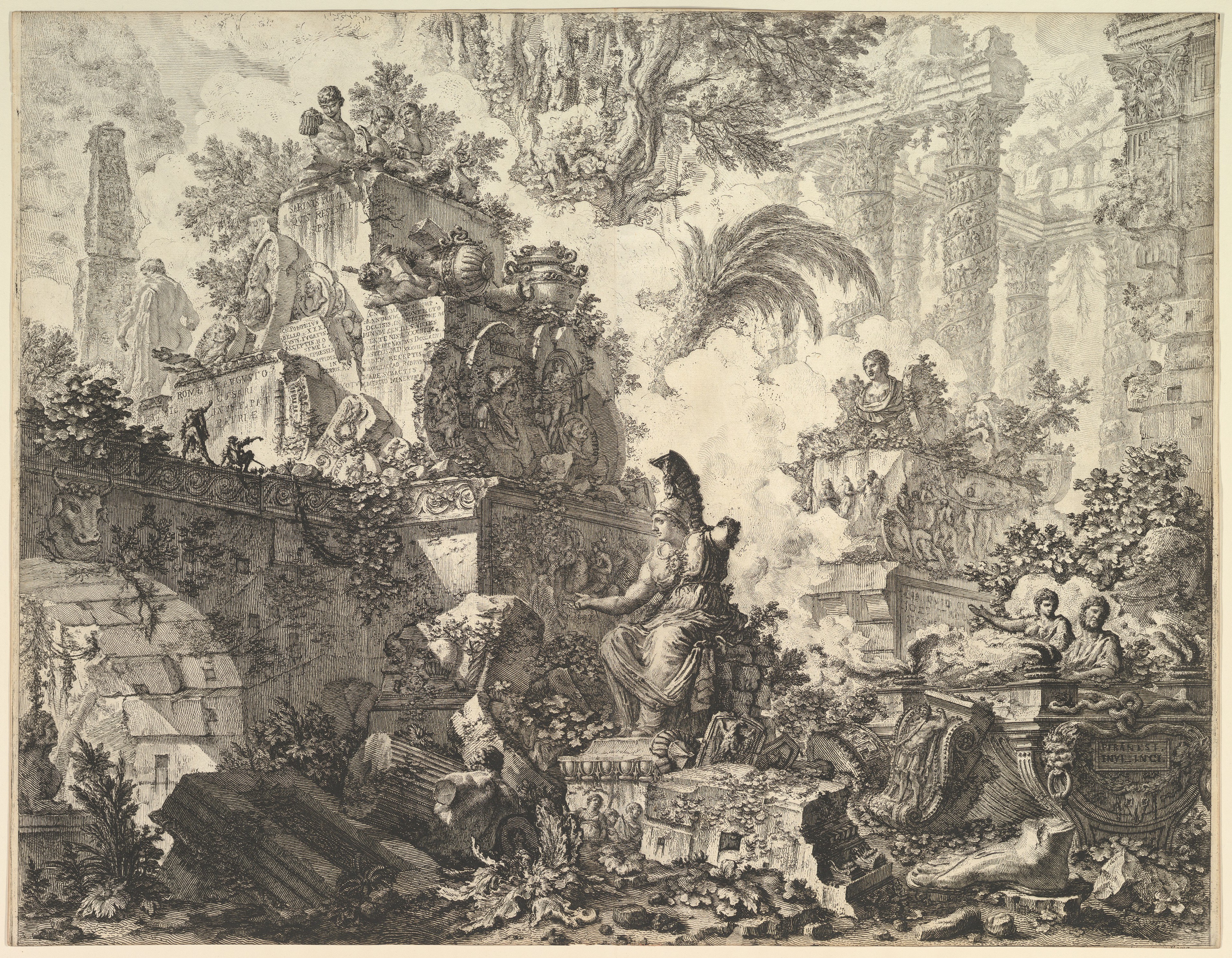
Beyond his renowned prints, Piranesi also ventured into architectural restoration and original design, showcasing his versatility as an artist and designer. His only known completed architectural work was the restoration of the church of Santa Maria del Priorato in Rome, commissioned in 1764 by Cardinal Rezzonico. For this project, Piranesi uniquely blended traditional Classical architectural elements, such as trophies and escutcheons, with his distinctive imaginative genius, evident in the design of the church's facade and the walls of the adjacent Piazza dei Cavalieri di Malta.
In 1769, Piranesi further demonstrated his design prowess through the publication of a series of innovative and sometimes eccentric designs for chimneypieces, alongside an original range of furniture pieces. These works solidified his reputation as a resourceful and inventive designer. Additionally, in 1776, he produced one of his most famous works as a 'restorer' of ancient sculpture, the Piranesi Vase, which exemplifies his ability to integrate fragmented antiquities into coherent and aesthetically compelling forms.
4. Artistic Influence and Thought
Piranesi's art was deeply rooted in the intellectual currents of his time, and his distinctive style and philosophical approach left an indelible mark on subsequent artistic and architectural movements.
4.1. Influence on Neoclassicism
Piranesi's profound engagement with classical antiquity, particularly his unique interpretation of Roman architecture, significantly influenced the burgeoning Neoclassicism movement. The mid-18th century witnessed a renewed interest in the classical past, spurred by discoveries at Herculaneum and Pompeii, as well as broader reevaluations of Greek, Egyptian, and Gothic cultures. This period fostered a shift in the perception of a "Golden Age" from a static ideal to a more mutable concept, influenced by thinkers like Jean-Jacques Rousseau and Johann Joachim Winckelmann.
This broader perspective on history led to new forms of artistic expression. Artists developed a greater self-awareness in confronting the perceived limitations of the ancient world's authority, and there was a growing fascination with the destinies of nations and civilizations. Piranesi was particularly invested in the Graeco-Roman debate of the 1760s, a scholarly dispute between followers of Winckelmann, who championed the superiority of Greek culture and architecture, and those, like Piranesi, who argued that the Romans had improved upon their Greek models. Piranesi's free and inventive relationship with the past is encapsulated in his personal mantra: col sporcar si trovaby messing about, one discoversItalian, highlighting his belief in creative exploration and discovery through experimentation. His detailed and imaginative reproductions of both existing and recreated Roman ruins served as a powerful visual lexicon that strongly influenced the aesthetic and philosophical tenets of Neoclassicism.
4.2. Artistic Style and Techniques
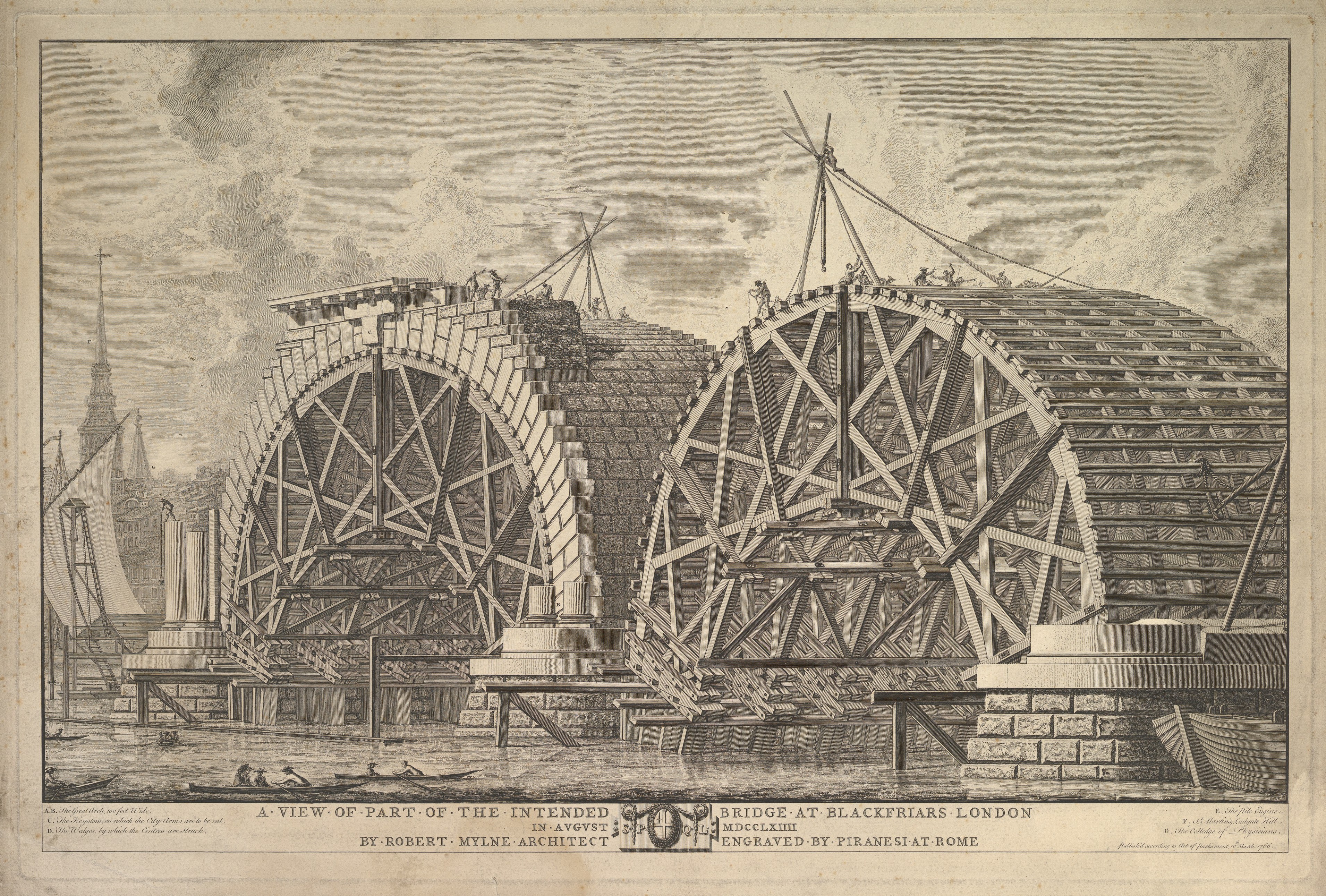
Piranesi's artistic style is characterized by its dramatic intensity, meticulous detail, and innovative use of etching techniques. He was a master of engraving, employing a broad and scientific distribution of chiaroscuro to create striking effects of light and shadow that imbued his prints with a powerful sense of atmosphere and depth. His ability to manipulate scale, often exaggerating the grandeur of ancient structures, contributed to the awe-inspiring quality of his Views.
Beyond mere reproduction, Piranesi's unique approach involved an inventive capacity to reconstruct missing parts of ancient architecture, drawing upon his deep understanding of the original architects' designs. He frequently introduced additional elements, such as groups of vases, altars, and tombs, into his compositions, even when they were not present in the actual ruins, to enhance the artistic and poetic impact. This creative liberty, combined with his technical mastery, allowed him to transcend simple topographical representation and create highly evocative and imaginative depictions of antiquity. His philosophy of "by messing about, one discovers" underscores his belief in the importance of experimentation and creative intuition in the artistic process.
4.3. Connection to the Grand Tour
Piranesi's works were intimately connected with the 18th-century phenomenon of the Grand Tour, a traditional trip through Europe undertaken by upper-class young men, primarily for educational and cultural purposes. During this period, Venice experienced a revival as a significant center for intellectual and international exchange. However, Rome quickly became the new intellectual capital and a central meeting point for Grand Tourists, as well as artists, architects, dealers, and antiquarians from across Europe.
Piranesi strategically positioned his workshop and a museum of antiquities near popular gathering spots like the Antico Caffè Greco and the Caffe degli Inglesi, enabling him to cultivate relationships with wealthy buyers on the Grand Tour, particularly English gentlemen. His prints, especially the Vedute di Roma, became highly sought-after souvenirs and artistic inspirations for these travelers. They served not only as detailed records of ancient monuments but also as powerful evocations of Rome's romantic and melancholic atmosphere. The widespread collection of his prints by Grand Tourists ensured their broad dissemination and cemented Piranesi's integral role in shaping the visual and intellectual experience of Roman antiquity for an international audience. For example, the Lobkowicz Collections, housed at the Lobkowicz Palace in Prague, contain a significant group of twenty-six of his engravings.
5. Archaeologist and Scholarly Contributions
Giovanni Battista Piranesi made significant contributions as an archaeologist, a role that was recognized during his lifetime through his election to the Society of Antiquaries of London. While his influence on technical drawings in antiquarian publications is often overshadowed by his artistic fame, his work was crucial for documenting and preserving the appearance of ancient sites.
Piranesi meticulously included explanatory notes in the lower margins of his prints, detailing the structure and ornamentation of the monuments he depicted. At the time, many ancient Roman monuments were neglected, abandoned in fields and gardens, and susceptible to decay or destruction. Piranesi actively sought to preserve these structures through his engravings, pushing himself to achieve a high degree of realism in his depictions. His precise observational skills allow modern viewers to experience the atmosphere of Rome in the eighteenth century and see monuments as they appeared before further degradation or clumsy restorations. It is estimated that a third of the monuments depicted in Piranesi's engravings have since disappeared, and many stucco and surface details were stolen or poorly modified. Piranesi likely understood his vital role in disseminating remarkable information about these ancient sites through his meaningful and detailed images. His commitment to antiquarian studies was further underscored by his appointment as Director of the Portici Museum in 1751, a position that involved the study and display of archaeological finds.
6. Assessment and Legacy
Piranesi's artistic standing has endured through centuries, influencing various fields and continuing to be commemorated in modern culture.
6.1. Contemporary Reception and Later Influence
During his lifetime, Piranesi's work garnered significant attention and acclaim, particularly among the Grand Tourists and the intellectual elite of Europe. His workshop in Rome flourished, becoming a hub for artistic production and dissemination. After his death, his artistic legacy was diligently preserved and continued by his children and several pupils. His son and collaborator, Francesco Piranesi, played a crucial role in collecting and safeguarding his father's printing plates. This effort ensured the continuity of Piranesi's influence, as new editions of his works were published. A comprehensive collection comprising 29 folio volumes, containing approximately 2000 prints, was notably published in Paris between 1835 and 1837, ensuring his works remained accessible and continued to inspire subsequent generations of artists, architects, and designers.
6.2. Commemoration and Modern References
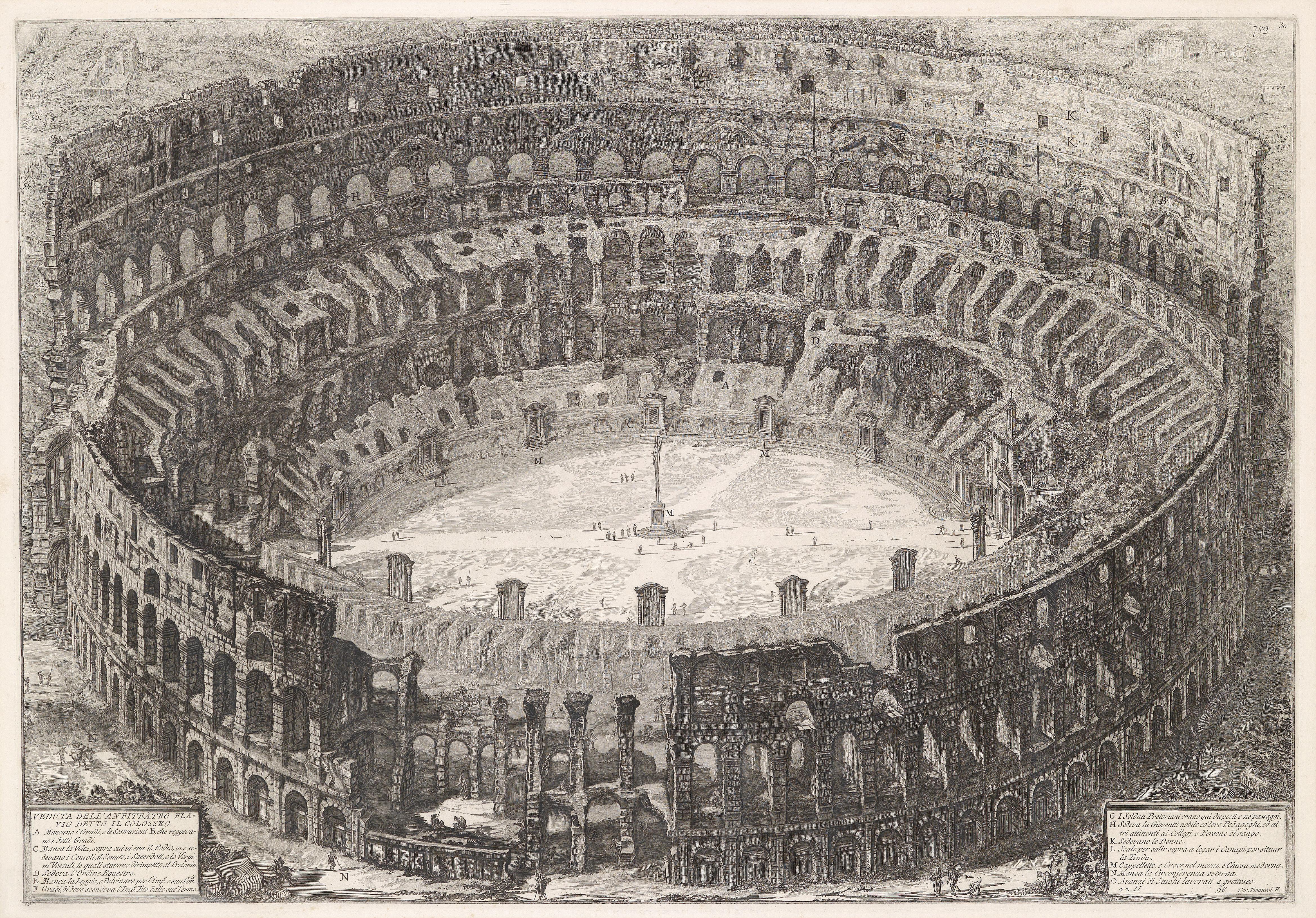
The enduring legacy of Giovanni Battista Piranesi is evident in various modern commemorations and cultural references. The International Piranesi Award for architecture, established in 1989, is annually awarded to recognize architectural excellence, reflecting his lasting impact on the field. His distinctive architectural fantasies, particularly the Imaginary Prisons, have inspired numerous contemporary works. For instance, the Franco-Belgian comic La Tour features designs directly based on Piranesi's Imaginary Prisons and includes a main character named "Giovanni Battista" in homage to the artist. In literature, Susanna Clarke's acclaimed 2020 novel Piranesi centers on a titular character who inhabits an unimaginably vast, labyrinthine house, drawing clear inspiration from Piranesi's intricate and endless architectural spaces. Furthermore, Piranesi's influence extends into the realm of video games: in Sunless Skies, Piranesi is the name given to a mutable, inscrutable prison surrounded by statues of impossible geometry, echoing his surreal designs. In the 2022 video game Ixion, a vessel belonging to the "Black Market Society" and hostile to the player is named the Piranesi, further demonstrating his pervasive influence on imaginative and architectural concepts in modern media.